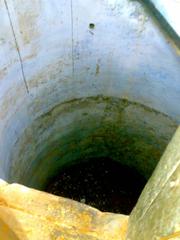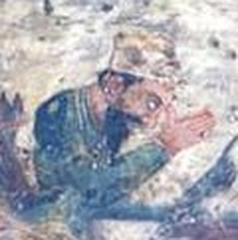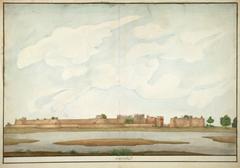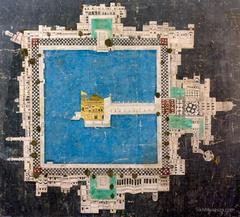
Comprehensive Guide to Visiting Jallianwala Bagh, Amritsar, India
Date: 16/07/2024
Introduction
Jallianwala Bagh, located in the heart of Amritsar, Punjab, is a historical site of immense significance in India’s struggle for independence. Known for the tragic events of April 13, 1919, the site has become a symbol of the Indian independence movement. The Jallianwala Bagh massacre, also known as the Amritsar massacre, marked one of the darkest chapters in Indian history and was a turning point in the fight against British colonial rule. This comprehensive guide offers a detailed history of the site, essential visitor information, travel tips, and insights into nearby attractions, making it an invaluable resource for anyone planning to visit this solemn landmark (BBC, The Guardian).
Table of Contents
- [History of Jallianwala Bagh](#history-of-jallianwala-baghhistory-of-jallianwala-bagh)
- [The Preceding Context](#the-preceding-contextthe-preceding-context)
- [The Rowlatt Act and Rising Tensions](#the-rowlatt-act-and-rising-tensionsthe-rowlatt-act-and-rising-tensions)
- [The Gathering at Jallianwala Bagh](#the-gathering-at-jallianwala-baghthe-gathering-at-jallianwala-bagh)
- [The Massacre](#the-massacrethe-massacre)
- [Visitor Information](#visitor-informationvisitor-information)
- [Visiting Hours](#visiting-hoursvisiting-hours)
- [Ticket Prices](#ticket-pricesticket-prices)
- [How to Get There](#how-to-get-therehow-to-get-there)
- [Travel Tips](#travel-tipstravel-tips)
- [Best Time to Visit](#best-time-to-visitbest-time-to-visit)
- [Accessibility](#accessibilityaccessibility)
- [Nearby Attractions](#nearby-attractionsnearby-attractions)
- [Golden Temple](#golden-templegolden-temple)
- [Partition Museum](#partition-museumpartition-museum)
- [Special Events and Guided Tours](#special-events-and-guided-toursspecial-events-and-guided-tours)
- [Annual Memorial Events](#annual-memorial-eventsannual-memorial-events)
- [Available Guided Tours](#available-guided-toursavailable-guided-tours)
- [Photographic Spots](#photographic-spotsphotographic-spots)
- [FAQ](#faqfaq)
- [Conclusion](#conclusionconclusion)
- [References](#referencesreferences)
History of Jallianwala Bagh
The Preceding Context
The Jallianwala Bagh massacre occurred on April 13, 1919, in Amritsar, Punjab, India, against the backdrop of British colonial rule marked by increasing unrest and demands for independence. The massacre was a pivotal moment in the Indian independence movement, galvanizing widespread opposition to British rule.
The Rowlatt Act and Rising Tensions
In March 1919, the British colonial government enacted the Rowlatt Act, which extended wartime emergency measures into peacetime, allowing the government to imprison any person suspected of terrorism without trial. This act was met with widespread protests and strikes across India, particularly in Punjab, where nationalist sentiments were strong (BBC).
The Gathering at Jallianwala Bagh
On April 13, 1919, thousands of people gathered at Jallianwala Bagh, a public garden in Amritsar, to celebrate the festival of Baisakhi and to peacefully protest against the Rowlatt Act. The garden was enclosed by walls and had only a few narrow entrances, making it difficult for people to escape (History).
The Massacre
Brigadier General Reginald Dyer, the acting military commander of Amritsar, arrived at Jallianwala Bagh with a contingent of fifty British Indian Army soldiers. Without warning, Dyer ordered his troops to open fire on the unarmed crowd. The firing continued for about ten minutes, during which approximately 1,650 rounds were fired. The official British Indian sources estimated that around 379 people were killed and over 1,200 were wounded. However, Indian National Congress sources claimed that the number of dead was over 1,000 (The Guardian).
Visitor Information
Visiting Hours
Jallianwala Bagh is open to visitors every day from 6:00 AM to 7:00 PM. It is advisable to check for any changes in timings due to special events or maintenance work before planning your visit.
Ticket Prices
Entry to Jallianwala Bagh is free of charge, making it accessible to everyone who wishes to pay their respects and learn about this significant historical event.
How to Get There
Jallianwala Bagh is located in the heart of Amritsar, near the Golden Temple. It is easily accessible by various means of transportation:
- By Air: The nearest airport is Sri Guru Ram Dass Jee International Airport, which is about 12 kilometers from the site.
- By Train: Amritsar Junction Railway Station is well-connected to major cities in India and is just 2 kilometers away.
- By Road: Amritsar is well-connected by road, and one can use local buses, taxis, or auto-rickshaws to reach Jallianwala Bagh.
Travel Tips
Best Time to Visit
The best time to visit Jallianwala Bagh is during the cooler months, from October to March.
Accessibility
The site is wheelchair accessible, and there are facilities for differently-abled visitors.
Nearby Attractions
Golden Temple
The Golden Temple, also known as Harmandir Sahib, is one of the most revered spiritual sites in Sikhism. It is located just a short walk from Jallianwala Bagh and is a must-visit for its serene beauty and spiritual ambiance.
Partition Museum
The Partition Museum is dedicated to preserving the memory of the partition of India in 1947. It is located near Jallianwala Bagh and offers a deep insight into the events and impact of partition on the Indian subcontinent.
Special Events and Guided Tours
Annual Memorial Events
Every year on April 13th, a memorial event is held at Jallianwala Bagh to commemorate the massacre. This event includes speeches, wreath-laying ceremonies, and cultural programs.
Available Guided Tours
Guided tours are available for visitors who wish to gain a deeper understanding of the historical significance of Jallianwala Bagh. These tours are conducted by knowledgeable guides who provide detailed information about the events of 1919.
Photographic Spots
Jallianwala Bagh offers several key locations for photography, including the memorial, the Martyrs’ Well, and the bullet-marked walls. These spots provide a poignant reminder of the site’s history and are ideal for capturing meaningful photographs.
FAQ
Common Questions Answered
Q: Is there an entry fee for Jallianwala Bagh?
A: No, entry to Jallianwala Bagh is free.
Q: What are the visiting hours for Jallianwala Bagh?
A: The site is open daily from 6:00 AM to 7:00 PM.
Q: How far is Jallianwala Bagh from the Golden Temple?
A: Jallianwala Bagh is just a short walk from the Golden Temple.
Conclusion
Jallianwala Bagh stands as a solemn reminder of the sacrifices made in the quest for India’s independence. Visiting this historic site not only offers a poignant glimpse into a crucial chapter of Indian history but also provides an opportunity to reflect on the values of freedom and justice. With its detailed history, accessible visitor information, and proximity to other significant attractions like the Golden Temple and Partition Museum, Jallianwala Bagh is a must-visit for anyone interested in India’s rich heritage. Plan your visit today to explore and pay homage to this pivotal landmark in Amritsar (History).
References
- BBC, 2019, ‘The Jallianwala Bagh massacre: What happened and why it matters’, BBC
- The Guardian, 2019, ‘Jallianwala Bagh massacre: 100 years on, UK must confront its own history’, The Guardian
- History, 2019, ‘Massacre of Indians at Amritsar’, History





